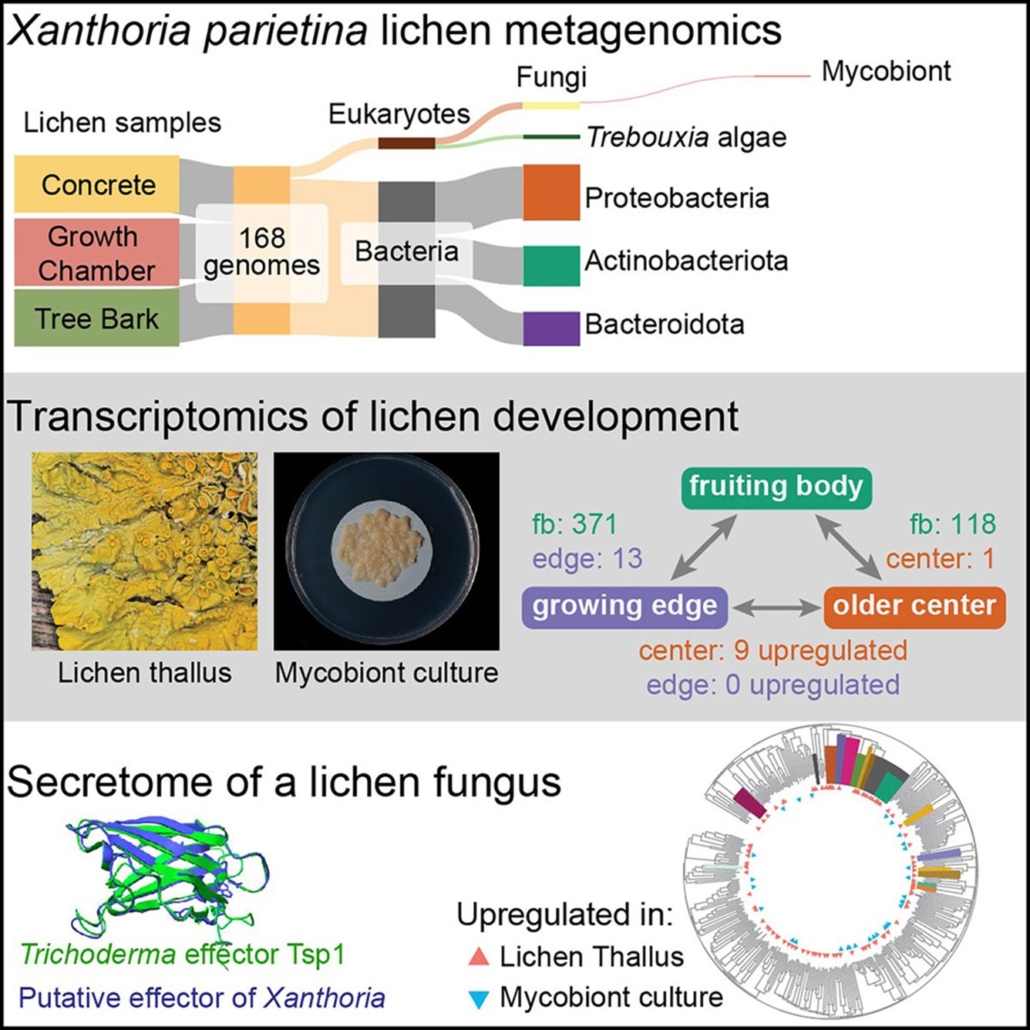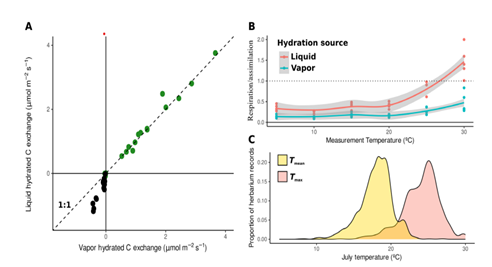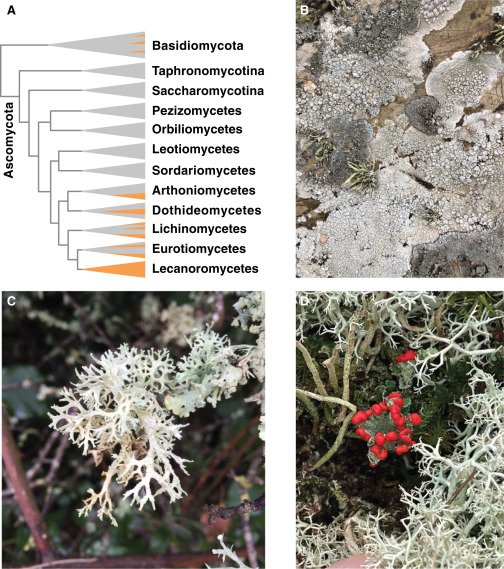
Symbiotic secrets: A multi-omics exploration of the lichen Xanthoria parietina
Plant Science Research WeeklyLichens are complex symbiotic organisms formed by algae or cyanobacteria living within the filaments of multiple fungal species. This unique partnership, which is both stable and self-replicating across generations, represents one of the most successful lifestyle strategies in the biological world. Lichens…

Hydration source determines carbon asymmetry and physiological activities in lichen-forming symbionts
Plant Science Research WeeklyMetabolic activities in symbionts are often described as physiologically synchronized, but sometimes, as in the case of coral bleaching, this synchrony can break down. This breakdown was observed in lichen by Meyer et al. when they examined the physiologies of Evernia mesomorpha fungal and algal components…

Essay: The coming golden age of lichen biology
Plant Science Research WeeklyLichens are remarkable, complex symbiotic organisms. They have evolved multiple times independently, but all lichen include at least one fungal partner (the mycobiont) which they usually resemble morphologically, and at least one cyanobacterial or algal photosynthetic partner (the photobiont). This partnership…

